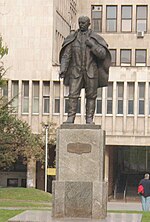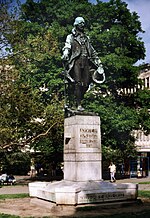Museum of Vuk and Dositej
1949 establishments in SerbiaArchitecture of SerbiaCultural Monuments of Exceptional Importance (Serbia)Education in BelgradeHouses completed in 1739 ... and 3 more
Museums established in 1949Museums in BelgradeOttoman architecture in Serbia

The Museum of Vuk and Dositej (Serbian: Музеј Вука и Доситеја / Muzej Vuka i Dositeja) is one of the most important memorial museums in Belgrade, the capital of Serbia. Founded in 1949, it depicts the life, work and legacy of Vuk Stefanović Karadžić (1787–1864), the reformer of the Serbian language, and Dositej Obradović (1742–1811), a writer who was the country's first Minister of Education. The museum is a crucial site for understanding the revival of Serbian culture at the time of the First Serbian Uprising against the Ottoman Empire. Since 1979, this institution has been governed by the National Museum of Serbia.
Excerpt from the Wikipedia article Museum of Vuk and Dositej (License: CC BY-SA 3.0, Authors, Images).Museum of Vuk and Dositej
Gospodar Jevremova, Belgrade Old Town (Stari Grad Urban Municipality)
Geographical coordinates (GPS) Address External links Nearby Places Show on map
Geographical coordinates (GPS)
| Latitude | Longitude |
|---|---|
| N 44.821111111111 ° | E 20.458888888889 ° |
Address
Доситејев лицеј (Музеј Вука и Доситеја)
Gospodar Jevremova 21
11000 Belgrade, Old Town (Stari Grad Urban Municipality)
Central Serbia, Serbia
Open on Google Maps











